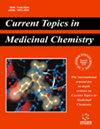胆管癌的分子生物标记物:聚焦胆汁
IF 2.9
4区 医学
Q3 CHEMISTRY, MEDICINAL
Current topics in medicinal chemistry
Pub Date : 2024-02-02
DOI:10.2174/0115680266290367240130054142
引用次数: 0
摘要
:近年来,肝胆系统癌症的发病率呈上升趋势。在没有早期症状的情况下,大多数此类癌症会表现出一系列相似的症状,如胆汁淤积导致肝后黄疸。肝胆癌的鉴别诊断是选择治疗方法的必要条件,但症状的相似性使诊断变得复杂。因此,寻找分子标记物对这类患者具有重要意义。胆管癌(Colangiocarcinoma,CCA)的特点是切除率低,预后差,这是因为这种疾病在诊断时往往已经超出了手术治疗的范围。CCA 的诊断结合了临床/生化特征、放射学方法和非特异性血清肿瘤生物标志物,但仍需进行侵入性检查。其主要缺点是特异性和敏感性有限,使早期诊断变得复杂。因此,预后和预测性生物标志物仍然缺乏,迫切需要用于早期诊断。与血清相比,胆汁的成分更简单,更容易识别胆道疾病。此外,由于胆汁与肿瘤直接接触,胆汁中可能含有更高浓度的肿瘤生物标志物。众所周知,胆汁的主要成分--胆汁酸的组成在不同的胆道疾病中可能会有所不同。本综述总结了目前关于血清和胆汁中 CCA 诊断生物标志物研究的最新进展,并概述了胆汁酸分析方法。本文章由计算机程序翻译,如有差异,请以英文原文为准。
Molecular Biomarkers in Cholangiocarcinoma: Focus on Bile
: Hepatobiliary system cancers have demonstrated an increasing incidence rate in the past years. Without the presence of early symptoms, the majority of such cancers manifest with a set of similar symptoms, such as cholestasis resulting in posthepatic icterus. Differential diagnosis of hepatobiliary cancers is required for the therapy selection, however, the similarity of the symptoms complicates diagnostics. Thus, the search for molecular markers is of high interest for such patients. Cholangiocarcinoma (CCA) is characterized by a poor prognosis due to a low resectability rate, which occurs because this disease is frequently beyond the limits of surgical therapy at the time of diagnosis. The CCA is diagnosed by the combination of clinical/biochemical features, radiological methods, and non-specific serum tumor biomarkers, although invasive examination is still needed. The main disadvantage is limited specificity and sensitivity, which complicates early diagnostics. Therefore, prognostic and predictive biomarkers are still lacking and urgently needed for early diagnosis. In contrast to serum, bile is more accessible to identify biliary disease due to its simpler composition. Moreover, bile can contain higher concentrations of tumor biomarkers due to its direct contact with the tumor. It is known that the composition of the main bile component - bile acids, may vary during different diseases of the biliary tract. This review summarizes the recent developments in the current research on the diagnostic biomarkers for CCA in serum and bile and provides an overview of the methods of bile acids analysis.
求助全文
通过发布文献求助,成功后即可免费获取论文全文。
去求助
来源期刊
CiteScore
6.40
自引率
2.90%
发文量
186
审稿时长
3-8 weeks
期刊介绍:
Current Topics in Medicinal Chemistry is a forum for the review of areas of keen and topical interest to medicinal chemists and others in the allied disciplines. Each issue is solely devoted to a specific topic, containing six to nine reviews, which provide the reader a comprehensive survey of that area. A Guest Editor who is an expert in the topic under review, will assemble each issue. The scope of Current Topics in Medicinal Chemistry will cover all areas of medicinal chemistry, including current developments in rational drug design, synthetic chemistry, bioorganic chemistry, high-throughput screening, combinatorial chemistry, compound diversity measurements, drug absorption, drug distribution, metabolism, new and emerging drug targets, natural products, pharmacogenomics, and structure-activity relationships. Medicinal chemistry is a rapidly maturing discipline. The study of how structure and function are related is absolutely essential to understanding the molecular basis of life. Current Topics in Medicinal Chemistry aims to contribute to the growth of scientific knowledge and insight, and facilitate the discovery and development of new therapeutic agents to treat debilitating human disorders. The journal is essential for every medicinal chemist who wishes to be kept informed and up-to-date with the latest and most important advances.

 求助内容:
求助内容: 应助结果提醒方式:
应助结果提醒方式:


